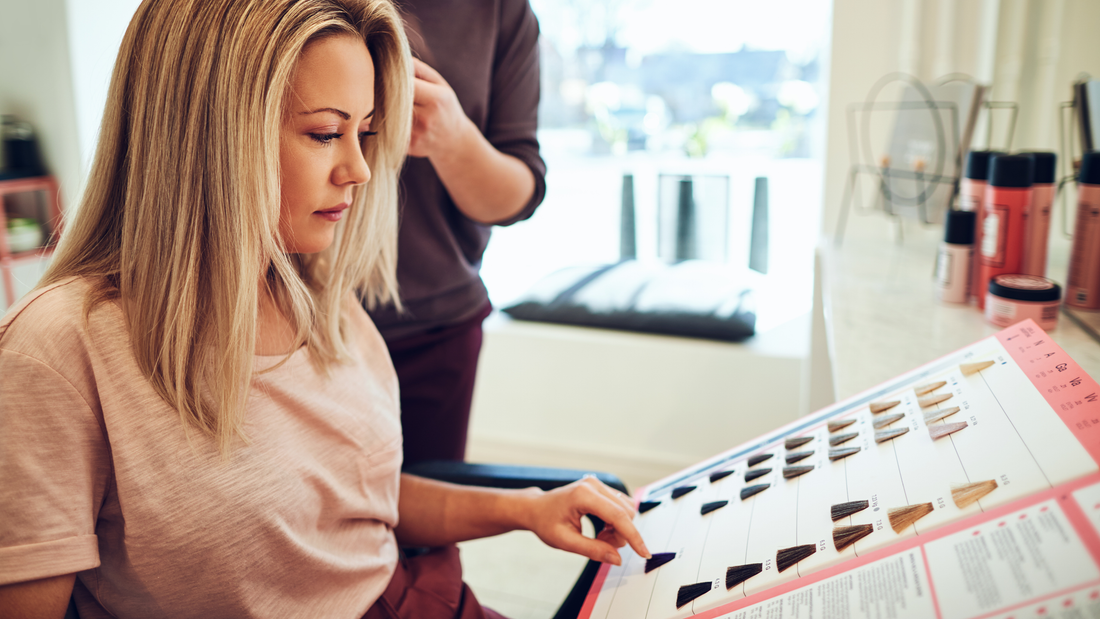Dyeing your hair does cause more hair loss than normal, but it’s not the kind of hair loss that you would associate with conditions like bald spots and receding hairlines. It’s most likely that your hair is badly damaged, too dried out, or it’s not getting enough nutrients. To better understand the damage that is happening to your hair when you dye it, we'll go into some of the science behind the hair dyeing process.
The Chemistry of Coloring Hair
Dyeing your hair is merely a series of chemical reactions that can be broken down into a 2-step process.
First, ammonia acts as a vehicle for the dye and creates the proper conditions for the chemical reactions to occur. It breaks through the outer layer of the hair shaft known as the cuticle. This allows the dye to reach the part of your hair responsible for its color, known as the cortex.
Next, hydrogen peroxide essentially “strips” your natural color so the new one can be added. Hydrogen peroxide does this by breaking up the bonds in the cortex of your hair and removes the pigment. Then, the new color bonds with the melanin in your hair to create the new pigment.
Understanding the Root of the Problem
Disulfide bonds are mainly responsible for the strength of your hair. The chemicals and manipulation of your hair from dyeing it can weaken those bonds, which leads to hair breakage and thinning. That’s why you see more shedding after you get your hair dyed and why it could seem like you’re going to lose all of your hair.
When you look at all of the science, you will see that dyeing your hair is affecting the hair shaft. However, it’s damage to the hair follicle that would cause you to actually go bald. As long as the dye is not doing any damage to or beneath your scalp, new hair will be able to continually grow back.
If you start to notice any damage, the most important fix is to condition your hair regularly. Conditioner replenishes moisture and puts a protective layer over the hair cortex. This helps repair the damage from those broken bonds and promotes proper hair growth. Using a hair mask a couple of times a week will also add an extra boost of moisture.
Vitamins and supplements, such as Shapiro MD’s Hairbiotic, are also an effective way to make sure you're getting the nutrients that your body needs for healthy hair.
When your body is healthy, so is your hair. The Shapiro MD Hairbiotic contains 3 naturally occurring beta glucans your gut needs for sustaining probiotic strains known to support a healthy gut. It also supports your immune system and promotes nutrient absorbtion. Creating the optimum environment in your body is essential for healthy hair, skin, and nail growth.
In Conclusion
You can rest easy knowing that dyeing your hair is not going to make you go permanently bald. Just make sure you regularly condition, don’t dye your hair too frequently, and consider adding hair-focused supplements to your daily routine to improve your hair as well as your overall health.




